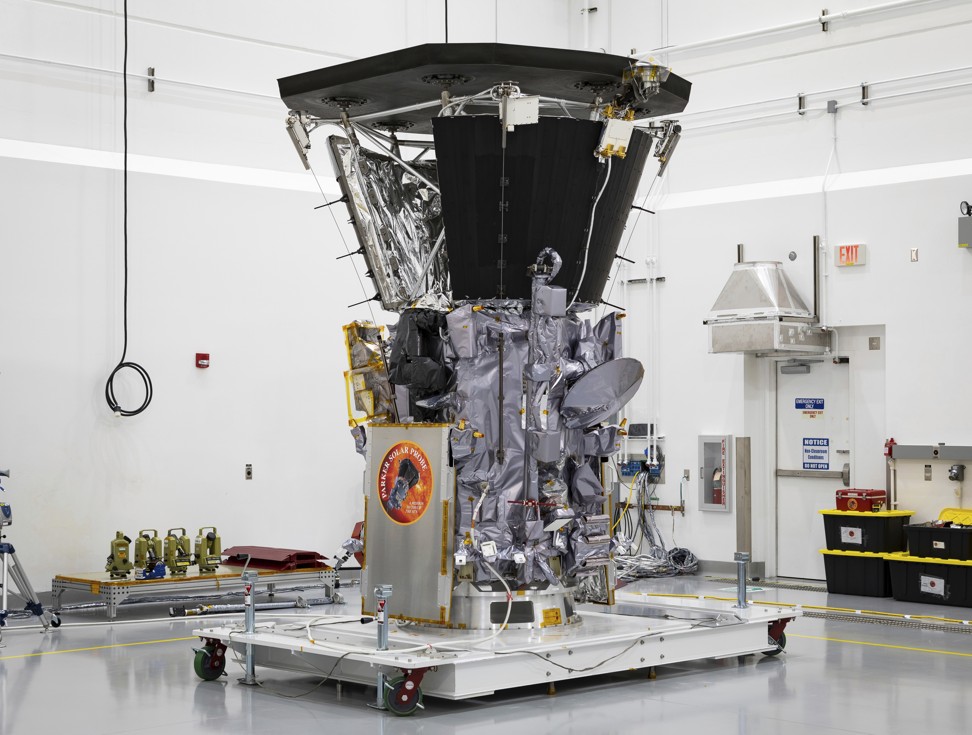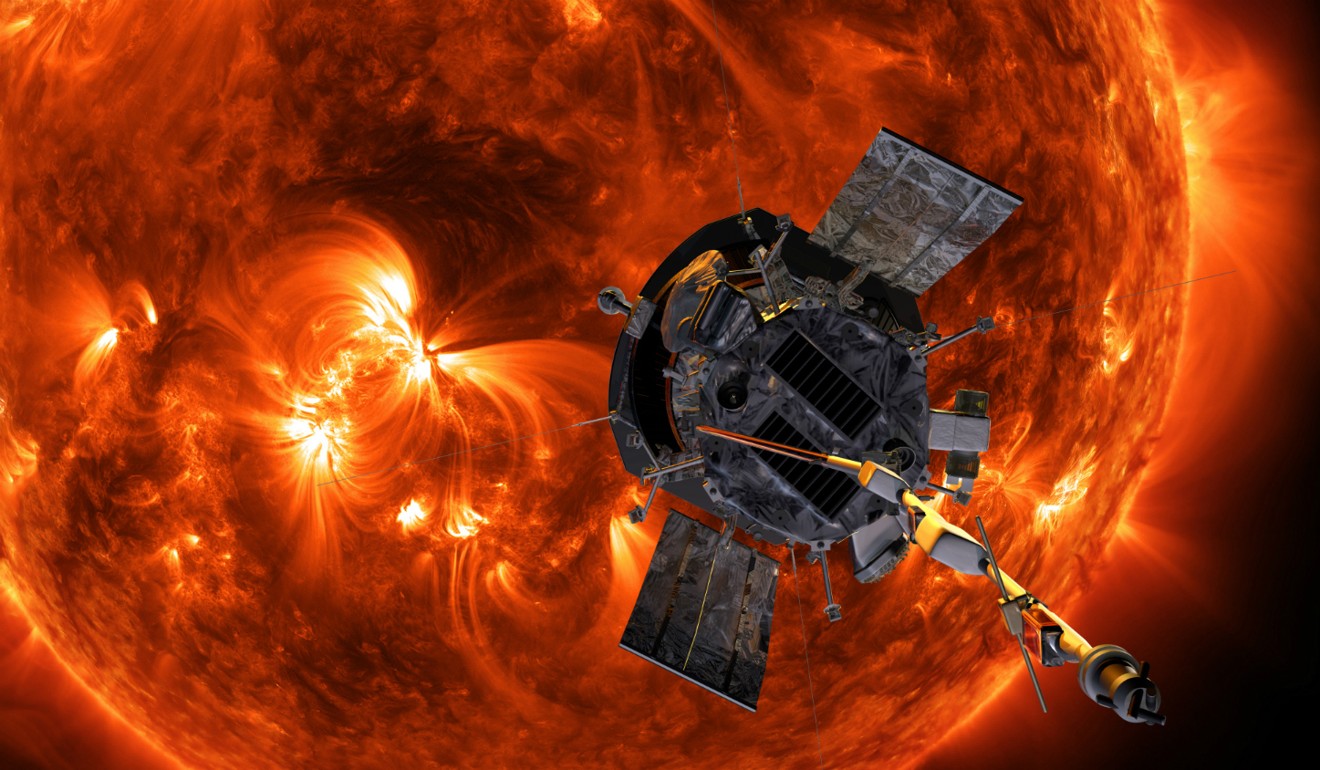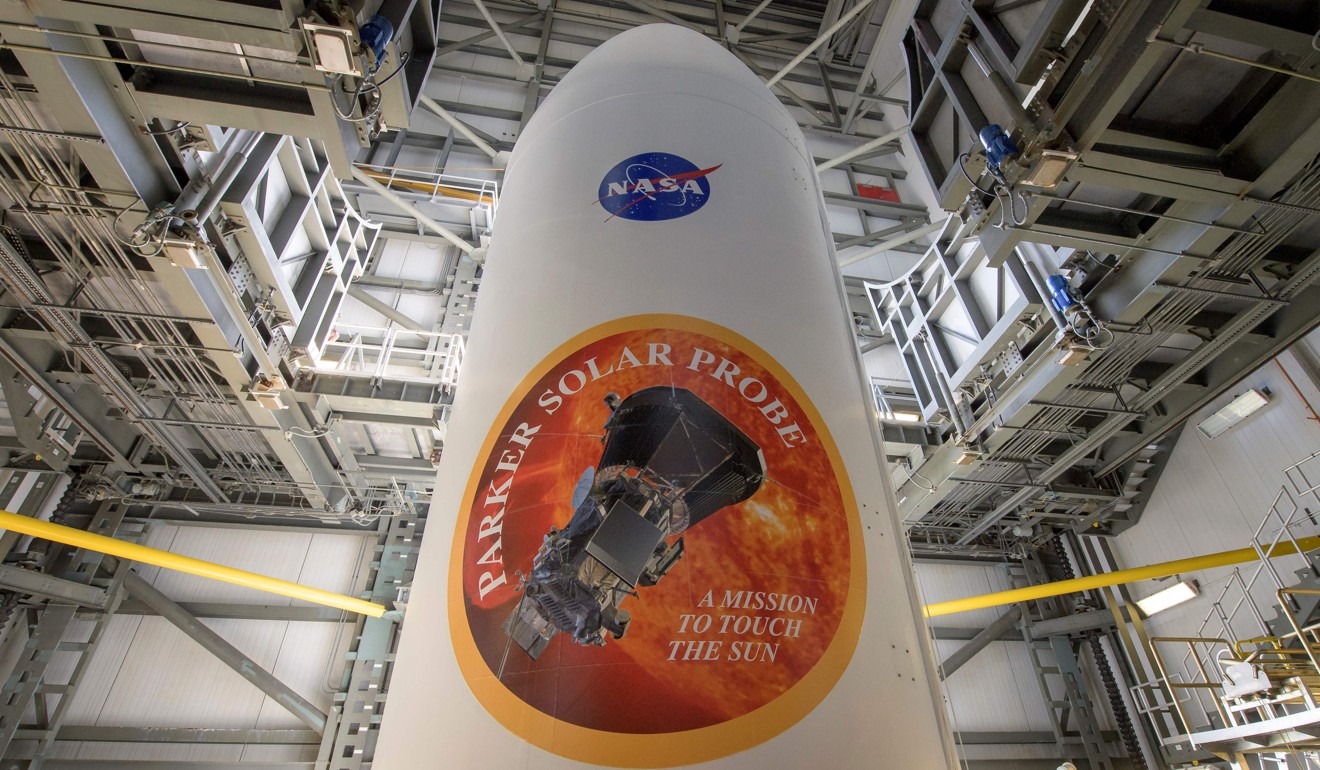
Spacecraft ready for mission to the sun, to understand risks of space weather catastrophe
The Parker Solar Probe is to launch within days, tasked with getting us closer to the sun than ever before – and helping Earth prepare for a disaster that would bring life as we know it to a halt
The source of all light and life on Earth is also the source of one of its biggest natural threats: space weather.
The sun’s atmosphere regularly erupts with fast-moving flashes of protons and explosions of energetic particles that can hit Earth within minutes and disrupt radio communication, interfere with GPS and fry the electric grid. A “worst case scenario” space weather event could cause more damage than US Hurricanes Katrina, Harvey and Sandy combined.
“It sounds like science fiction,” said US National Oceanic and Atmospheric Administration meteorologist William Murtagh, who heads the Space Weather Forecasting Centre. “But it’s something that is not only possible but very likely to happen in the not-too-distant future.”

But as early as Saturday morning – if all goes according to plan – Murtagh and scores of other researchers will watch as Nasa’s newest spacecraft, the Parker Solar Probe, embarks on a mission to get closer to the sun than any human-made object has before.
It’s the culmination of a half-century effort to understand our star, Murtagh says, and it may help us prepare for the hazards the sun may throw at us in the future.
Part of the sun erupted on September 1, 1859. English astronomer Richard Carrington noticed a brilliant white solar flare on the sun, brighter than the sunspots he usually observed. Roughly a day later, a blast of charged particles – known as a coronal mass ejection, or CME – arrived at Earth, jostling the planet’s magnetic bubble. People as far south as Cuba saw the sky light up with auroras. Geomagnetic currents sent surges of electricity through copper telegraph wires, zapping operators and setting telegraph paper on fire.

The energetic particles within a coronal mass ejection can penetrate the walls of spacecraft and pose a radiation risk to astronauts and the technology they depend on. They can interfere with satellites, disrupting radio communication and GPS. And a CME hits our planet’s magnetosphere at the right angle, it can generate powerful waves of electricity within the Earth. These may then infiltrate utility grids and blow out transformers that provide electricity – like tripping a circuit on a massive scale.
The sun exploded again in July 2012, spewing material toward Earth at nearly 10 million km/h. This time the coronal mass ejection hit a Nasa spacecraft called STEREO-A at full-blast. The spacecraft’s sensors were stressed, but they still managed to measure the solar particles, gusts of solar wind and the strength of the interplanetary magnetic field.
A year after the explosion, in a paper published in the journal Space Weather, astrophysicists examined the STEREO-A data to answer a worst-case question. “What if that coronal mass ejection had occurred 10 days earlier,” said Daniel Baker, a professor of planetary and space physics at the University of Colorado at Boulder and one of the authors of the study, “when the earth was in the line of fire?”
Their conclusion: If it had hit Earth, Baker and his colleagues wrote, there was a “very legitimate question of whether our society would still be ‘picking up the pieces’.”

Trillion-dollar space storms are a rare issue that rallies Republicans and Democrats alike. The Obama administration’s executive order 13744 created a national space weather policy in 2016. FEMA recently finished drafting a federal operations plan for space weather, which was sent to the Trump administration for approval. Congress is also considering legislation directing funds toward developing a space weather plan.
That a future solar storm will blast Earth is not a question of if, but when. In 2012, Peter Riley, who studies the sun’s corona at Predictive Science Inc, a San Diego-based company that develops computer models of the sun, published an article in Space Weather that calculated the odds of a Carrington-scale repeat. Within the next decade, he concluded, it could be about 12 per cent – on par with the risk of other 100-year hazards, like massive floods.
Over the next seven years, the Parker Solar Probe will embark on a series of 24 orbits around the sun, repeatedly swinging past Venus to re-orient itself. Each close approach will shoot it through the corona at 720,000km/h, and at its closest will bring it within 6 million km of the surface. With its dust detectors, particle counters, and a telescope that can take 3D images of the corona, the probe will measure the sun’s electric and magnetic fields, scoop particles from the solar wind for sampling, and watch as shocks travel out from the sun’s surface, through the atmosphere and into space.
“There’s no doubt in my mind that measurements from probe and our understanding is going to have a huge impact on our ability to predict space weather,” said Christina Cohen, a scientist at the California Institute of Technology’s Space Radiation Lab who studies energetic particles.
It’s a project scientists have dreamed about for roughly as long as they’ve known about the solar wind. But it took half a century to develop the necessary technology. When the spacecraft makes its first close approach in November, a carbon-composite heat shield will be all that protects the minivan-sized Parker Solar Probe from the inferno.

